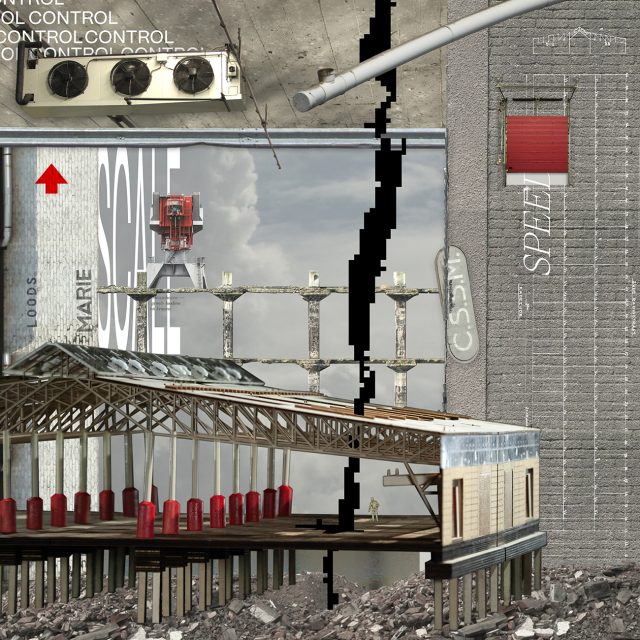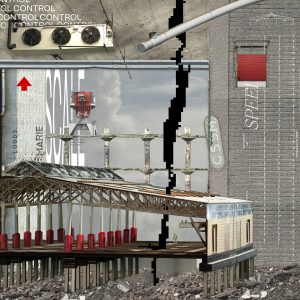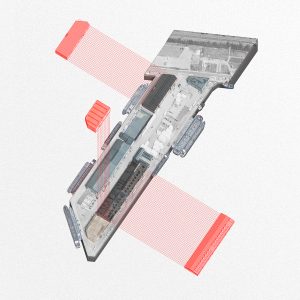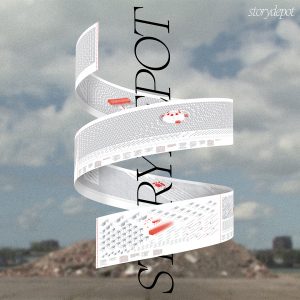Afstudeerpresentatie Sven Schouten
vrijdag 5 april, 16u00
Vrijdag 5 april vindt de afstudeerpresentatie plaats van Sven Schouten (Architectuur) met als onderwerp
“Cannibal Architecture“.
Commissie:
Voorzitter : Willemijn Lofvers (RAvB)
Mentor : Claudio Saccucci (Studio Verter)
Externe criticus : Tomas Dirrix (Atelier Tomas Dirrix)
Toegevoegde criticus : Laurens Boodt (Laurens Boodt)
Afstudeerdatum en locatie:
Vrijdag 5 april om 16u00, inloop 15u30
Locatie: Sluisjesdijk 116 te Rotterdam
Cannibal architecture: A mortuary practice for buildings
What afterlife do we give to architecture?
Removing matter from the existing built environment is quite a violent affair.
Extracted by force with hydraulic machinery, burned for heat, buried under highways, crushed, melted, or – at best – neatly sorted by function in material depots. The remains of architecture are not only stripped of form and quality, but also stripped of meaning. A process of cultural destruction. And so, its afterlife is in the shadows, without history.
Can we reuse architecture with the aim of extending its narratives instead of disposing them?
Endocannibalism
Here inspiration was taken from endocannibalism, a mortuary ritual. When a person passed away, the community gathered and prepared a certain part of the body. Each body part would symbolize certain virtues of the deceased person. For instance: the heart could symbolize honor, while the stomach could represent knowledge. By consuming these body parts, the values of the dead were assimilated into the collective identity and their virtues were passed on through the community. A ritual of remembrance and preservation.
Cannibal Architecture
This project reinterprets the rite of endocannibalism to operate within the urban context: into Cannibal Architecture; A mortuary practice for buildings. Architecture eating architecture, digesting resources, functions, and symbols, incorporating these in their own body of material.
Radiostraat
From here we look at the Radiostraat in the Merwehaven. The now industrial area will soon be redeveloped to a car-free, high-density residential district with 2500 apartments. This entails not only a radical transformation of the built environment, but also of the cultural fabric of the site.
Viewed through the lens of cannibal architecture, the warehouses might be partially sacrificed, but their cultures could continue in another building, the cannibal structure. A next chapter in its chronology.
Sluisjesdijk
In this next chapter we are introduced to 3 sites on the Sluisjesdijk in the Waalhaven. Here the existing fabric acts as the community of cannibals, consuming the discarded components from the Radiostraat. What follows is the process of digestion; a dialogue of two bodies, holding different experiences, materials, forms, and places. Salvaging the stories of Radiostraat to revive them within the built environment of Sluisjesdijk.
Ragpicker
Through this mortuary practice we learn to mediate – negotiating and reframing existing forces – but also to rag pick; collecting and revaluing what is otherwise neglected or thrown out. Giving architecture an afterlife that not only preserves but reanimates its history through the act of cannibalism.
The ragpicker “collects and catalogues everything that the great city has cast off, everything it has lost, and discarded, and broken. The ragpicker goes through the archives of debauchery, and the jumbled array of refuse. Making a selection, an intelligent choice; like a miser hoarding treasure, collecting the garbage that will become objects of utility or pleasure when refurbished by Industrial magic.” [1]
[1] From Walter Benjamin – Das Passagen-Werk (1927-1940), found in the translation: the Arcades Project (1999) p349, quoted from Charles Baudelaire – Du Vin et du haschisch, Oeuvres Vol 1 (1851) p249-250


